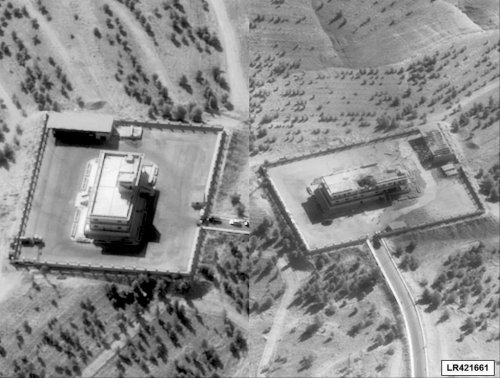- Joined
- 21 April 2009
- Messages
- 13,145
- Reaction score
- 5,977
Airstrikes Begin Against ISIS in Syria
9/23/2014
US aircraft—reportedly including Air Force F-22s in their combat debut—and cruise missiles, along with partner-nation airplanes, commenced strikes on ISIS targets in Syria on Monday. "I can confirm that US military and partner-nation forces are undertaking military action against [ISIS] terrorists in Syria using a mix of fighter, bomber, and Tomahawk Land Attack Missiles," said Pentagon Press Secretary Rear Adm. John Kirby in a statement. This marks the first airstrikes against ISIS forces inside of Syria since President Obama earlier this month announced the US strategy to destroy the terrorist army. "The decision to conduct theses strikes was made earlier today by the US Central Command commander under authorization granted him by [Obama]. We will provide more details later as operationally appropriate," added Kirby. Associated Press reported that aircraft from Bahrain, Jordan, Qatar, Saudi Arabia, and the United Arab Emirates took part in the strikes with the US assets. ABC News reported that F-22s were part of the air armada. If accurate, this would be the stealth aircraft's first use in combat. US aircraft have been bombing ISIS inside of Iraq since August. (Kirby's Twitter feed)
http://www.militarytimes.com/article/20140922/NEWS05/309220056/U-S-beigns-airstrikes-Islamic-State-targets-Syria?sf31461955=1
9/23/2014
US aircraft—reportedly including Air Force F-22s in their combat debut—and cruise missiles, along with partner-nation airplanes, commenced strikes on ISIS targets in Syria on Monday. "I can confirm that US military and partner-nation forces are undertaking military action against [ISIS] terrorists in Syria using a mix of fighter, bomber, and Tomahawk Land Attack Missiles," said Pentagon Press Secretary Rear Adm. John Kirby in a statement. This marks the first airstrikes against ISIS forces inside of Syria since President Obama earlier this month announced the US strategy to destroy the terrorist army. "The decision to conduct theses strikes was made earlier today by the US Central Command commander under authorization granted him by [Obama]. We will provide more details later as operationally appropriate," added Kirby. Associated Press reported that aircraft from Bahrain, Jordan, Qatar, Saudi Arabia, and the United Arab Emirates took part in the strikes with the US assets. ABC News reported that F-22s were part of the air armada. If accurate, this would be the stealth aircraft's first use in combat. US aircraft have been bombing ISIS inside of Iraq since August. (Kirby's Twitter feed)
http://www.militarytimes.com/article/20140922/NEWS05/309220056/U-S-beigns-airstrikes-Islamic-State-targets-Syria?sf31461955=1

